The rules that govern your aircraft’s performance envelope are not imposed by regulators, but by nature. Ignore them at your peril.
An excerpt from an ATSB report:
On 18 August 2022, an instructor and trainee instructor were operating a Cessna 310R during a training flight from Redcliffe Aerodrome, Queensland when the engines started surging alternatively. The instructor declared a MAYDAY and began tracking for a forced landing at Sunshine Coast Airport, but during troubleshooting on descent, the crew switched from the auxiliary to the main fuel tanks and the engine issues were rectified. The crew then conducted an uneventful landing. An ATSB investigation found the auxiliary tanks had been exhausted, resulting in fuel starvation and engine surging. ‘The pilots did not establish the amount of fuel on board prior to the flight, or manage the fuel state throughout the flight,’ ATSB Director Transport Safety Dr Stuart Godley said. ‘Both pilots were unaware of the fuel system configuration of the Cessna 310R, believing the aircraft was fitted with larger auxiliary tanks than was the case.’
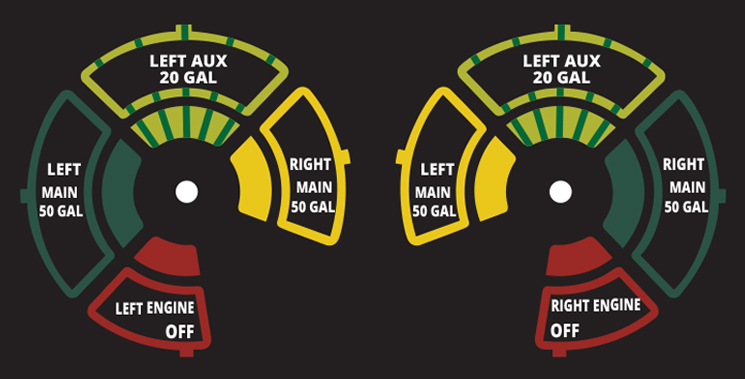
This incident ended with a good outcome. The main lessons learnt involve ensuring the aeroplane documentation and placards reflect its design – in this case, the capacity of each of its fuel tanks – and for pilots to continually monitor fuel use and fuel quantity information to avoid a fuel starvation event.
However, the incident report at least suggests the crew of the C310R might have planned to land with the engines drawing fuel from the auxiliary fuel tanks (although in
their defence they might have expected to select main tanks
closer to the destination).
Exceed limitations and the aeroplane won’t fly as advertised – if it will fly at all.
This possibility, which has been a factor in numerous aircraft accidents in the United States and undoubtedly in Australia as well, serves as a reminder of a simple statement I find myself repeating in flight instruction and aircraft technical support all too often: aircraft limitations are real.
Limitations
Operating limitations are the boundaries of what is permissible when operating an aircraft to ensure that aircraft’s controllability, handling, performance and operation are predictable and within the expectations outlined in the aircraft’s type certificate and its flight manual or pilot’s operating handbook (POH). Exceed limitations (or in some cases, fall below a minimum-standards limitation, such as fuel or engine oil quantity) and the aeroplane won’t fly as advertised – if it will fly at all.
Limitations may apply to the airframe, its engine(s) and, if either have been modified from their original specification, optional or modified components and equipment. Limitations are listed on the type certificate data sheet (TCDS), which is the certification document that
lists specifications for a particular aircraft type.
Limitations are more easily found by pilots in Section II, Limitations, of a general aviation manufacturers association (GAMA)-format aircraft flight manual (AFM) or POH. Some aircraft pre-date or otherwise do not have a GAMA-format manual and limitations are listed in some other section.
Aircraft modifications installed under supplemental type certificates have AFM/POH supplements that mirror in design the GAMA format. As such, these supplements contain any changes from the original limitations that come because of the modification.
A few examples: new weight and balance limits may be established, or changes in fuel flow or pressure may result from an increase in power or the addition of turbocharging. Speed brakes may be prohibited from use during take-off and landing. The new Garmin autopilot installed on the Beech A36 Bonanza I fly requires no more than a 15-gallon (56-litre) difference in fuel load in one wing compared to the other, to operate properly.
Whether original equipment or modification, many operating limitations are indicated by instrument markings and placards on the aircraft itself. Required placards are listed in the same places as the limitations themselves – in the applicable AFM/POH or supplemental type certificate (STC) supplement section and on the TCDS.
Limitations may also be created or changed through airworthiness directives (ADs) or regulatory change. For example, the CASA life limit on the wing spar, the wing carry-through structure and the fuselage pressure vessel of a Beech 58P pressurised Baron is 13,250 operating hours (the limit is 10,000 hours in the US).
However, 20 58Ps and one unpressurised 58TC were operated by the US Forest Service as firefighting spotter planes, marking drop zones for large aerial tankers. Flying and manoeuvring close to rugged mountain terrain, these P-Barons encountered far more heavy turbulence than the typical light aircraft. After airframe investigation with the Forest Service, the US FAA enacted AD 2007-21-02 limiting those specific aeroplanes (by airframe
serial number) to 4,500 hours time-in-service. If an AD mandates a change to limitations that already require a placard or instrument marking, the AD will usually specify the marking or placard be changed
to reflect the new limitation.
What’s not limited
Nothing besides the limitations section information in an AFM or POH is an operating requirement. Most of the manual we use for flight planning, education and reference is not legally binding but is instead the manufacturer’s recommendation on how to best operate and maintain the aeroplane.
An engine can only pull so hard; a wing can only lift so much.
For example, the take-off performance chart for the Bonanza I fly states performance is based on a ‘paved, level, dry surface’. Does this mean I can’t use an unsealed runway or one with a slope, or even a pavement for take-off after a passing rain shower? No, it simply means if I do, I won’t get the performance suggested by the performance chart. I’ll have to use my best judgement and throw in a healthy margin to account for the variables.
You might choose to operate differently than the technique recommended in everything except the limitations of an AFM, POH or supplement. That’s fine so long as no limitations are violated.
What’s limited, and why
There are 4 broad categories of limitation that will apply in some way to every aircraft:
1. Airspeeds
Airspeed limitations are operational, based on structural forces. Things like flap operating ranges, retractable landing gear extended speed, design manoeuvring, maximum normal operating or structural cruising speeds, and never exceed speed are limitations. Performance speeds like VX or VY are not airframe limitations and do not appear in the limitations section.
It should be obvious why these speeds are limiting – exceed them and you risk structural damage. What may not be obvious is subtle changes to the design over time that result in different limitations for one aircraft compared to another that outwardly looks essentially identical.
For example, take the changing VLE/VLO speeds (landing gear maximum extended and maximum operation speed, respectively) over the production life of V-tail Beech Bonanzas (I apologise again for dropping back to my aircraft type comfort zone):
| Model years | Models | VLE/VLO (IAS) |
|---|---|---|
| 1947–1948 | 35 | 100 mph (87 kts) |
| 1949–1954 | A35 through E35 | 127 mph (110 kts) |
| 1955 | F35 | 124 mph (108 kts) |
| 1956–1961 | G35 through N35 | 142 mph (123 kts) |
| 1962–1968 | P35 through V35A | 167 mph (145 kts) |
| 1969–1982 | V35B | 177 mph (154 kts) |
However, progressively beefier hardware used through the design life is not obvious unless compared side-by-side. More robust hardware means added strength and, therefore, higher limit speeds.
2. Systems
Various airframe and engine systems will have limitations. For example, the C310R example that prompts this discussion reminds us that (at least in every case I’ve ever seen) aeroplanes fitted with auxiliary fuel tanks prohibit the use of those tanks for take-off and landing.
Under some circumstances fuel will unport, that is, flow away from the fuel lines and interrupt flow to the engine(s) in nose-high or low attitudes or high angles of attack. Limitations in the Cessna 310R AFM require the use of main tanks for
take-off and landing, effectively prohibiting the use of auxiliaries in those flight regimes.
Other types, like the Bonanza I fly, prohibit using auxiliary tanks except in level flight. Testing reveals a chance of fuel unporting from ‘aux’ tanks in normal climb and descent attitudes in these models.
3. Quantities
Minimum fuel and oil levels, maximum flow rates and pressures are all noted in the limitations section. Unusable fuel may be usable under some conditions, but don’t plan on it. Too much or too little operating fluids can be dangerous or damaging.
The sometimes touted ‘cranking up’ of take-off fuel flows on some
engines beyond limiting flow rates is not only illegal, it reduces power output and therefore inhibits performance as well.
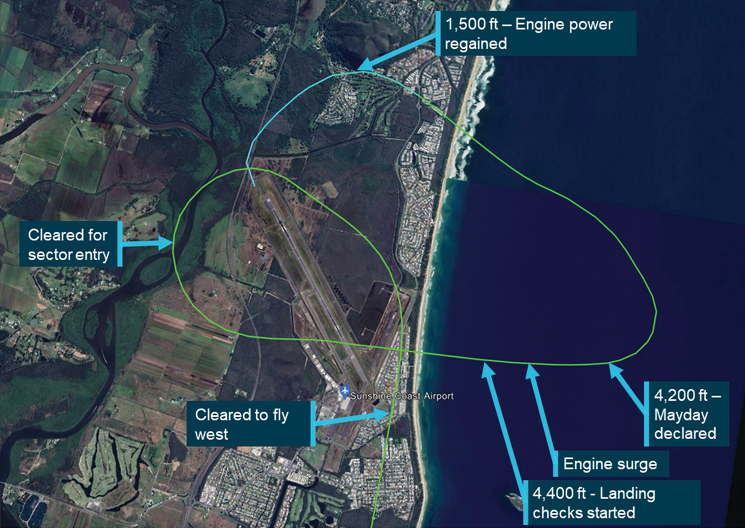
4. Loads
An engine can only pull so hard; a wing can only lift so much. Stability increases but performance decreases as the centre of gravity (CoG) moves forward. But if CoG is past the forward limit, performance will not meet expectations and the aeroplane may be so stable it does not have the control authority to change pitch, especially at lower speeds. Aft CoGs decrease stability and, beyond limits, control authority and stability will be lost.
These are the boundaries within which the aircraft must be flown.
Regardless of CoG location, at some point G-load will overcome the structural strength of the materials used to build the aircraft, and that maximum load may change under some conditions.
Approved increases in maximum weight come with a compromise. In most cases a ‘gross weight increase’ changes the aircraft certification basis, most practically for pilots, its ability to withstand turbulence encounters with the same margin against structural damage as when at or below the original maximum weight. This may drive other limitations like the design manoeuvring speed. Your neighbour’s aeroplane may have the government approval to operate at a higher weight than your identical aircraft, but if yours does not have that approval there are legal issues unrelated to whether the aeroplane can physically operate at higher weights.
Limitations are real
Read through the Limitations section of the AFM/POH or other manual for each aircraft you fly, including any that apply to modifications. These are the boundaries within which that aircraft must be flown to withstand the forces of flight it will likely encounter, and to obtain the performance reasonably expected of the type.
Whether some pilots like to think so or not, airframe, engine and component limitations are real. Actual thought, materials selection and testing went into defining limitations. Sometimes changes to construction will change limitations when there are no outwardly visible reasons why one aircraft cannot be flown like another. Some modifications alter limitations but may require compromise to do so. Be assured that manufacturers have an interest in setting the least restrictive limitations possible to permit maximum safe use of their products, making them appear better than their competitors and the aircraft as attractive as possible to buyers.
If there is a limit on speeds, systems, quantities and loads it’s because there are very real reasons.

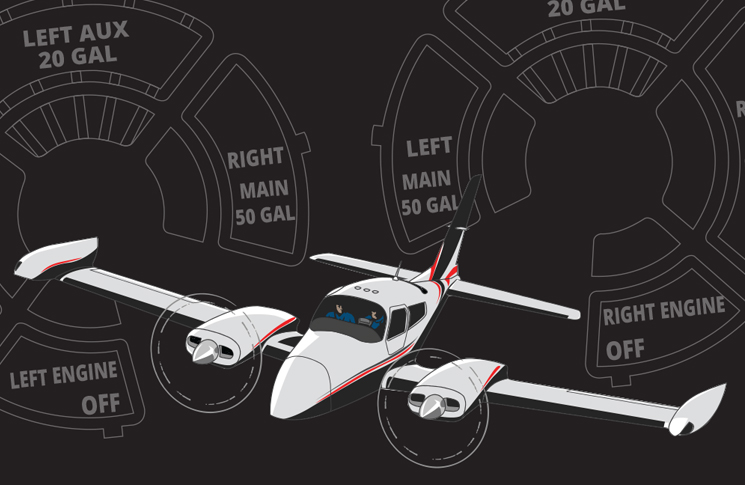

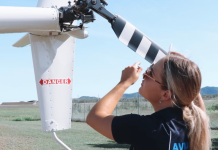
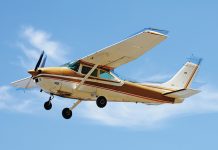

Comments are closed.